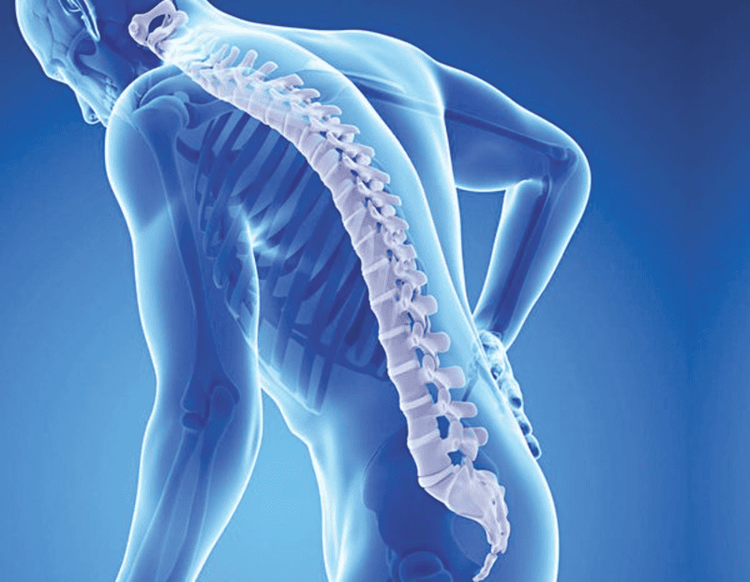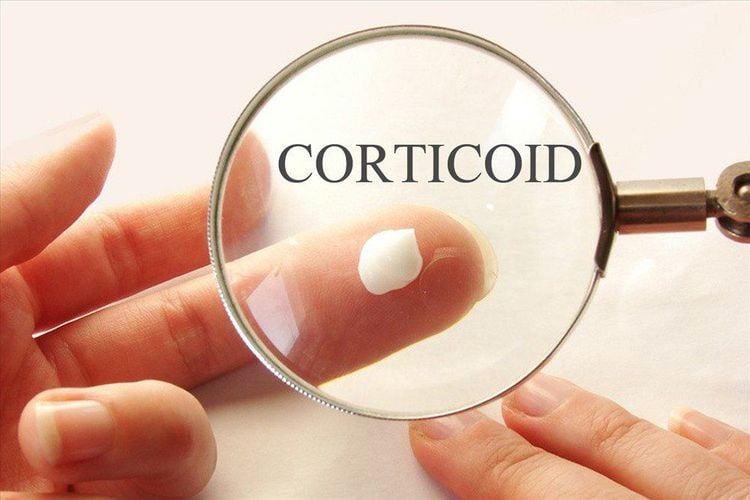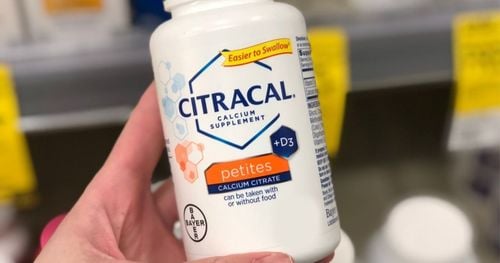This is an automatically translated article.
Corticosteroids are effective drugs to treat many diseases, but if not used properly, they will cause osteoporosis. Osteoporosis caused by corticosteroids can be completely prevented and treated, if the patient strictly adheres to the doctor's instructions.1. Osteoporosis and what you need to know
Osteoporosis is the most common disease in the elderly, this disease is also known as spongy or brittle bone disease. Osteoporosis is a condition in which bone density gradually decreases and makes bones more brittle and easier to break even with minor trauma.Osteoporosis is considered the main cause of fractures, especially in the elderly and post-menopausal women. The most commonly broken bones are the spine, femur... with slow recovery and expensive treatment.
Osteoporosis often has no obvious symptoms, patients are difficult to recognize until a fracture or minor trauma to the bone occurs. However, there are still signs to recognize this disease including:
Osteoporosis causes vertebrae collapse causing back pain, decreased height, hunched back Bone pain often occurs, can be in one certain locations or whole body Frequent pain in places such as spine, pelvis, waist, knees, hips. The pain is often dull but just rest will be relieved In the elderly, osteoporosis will be accompanied by a number of other diseases such as varicose veins, osteoarthritis, high blood pressure... About the cause of the disease Osteoporosis includes 2 groups of causes as follows:
Causes that cannot be changed: Gender, age, body size, family history, early menopause, previous fractures, certain medical conditions such as inflammation Rheumatoid arthritis, Cushing's syndrome, Possible causes: Hormonal, dietary calcium or vitamin D deficiency, anorexia nervosa, long-term corticosteroid use, exercise regimen, regular exercise days, smoking and drinking...

Loãng xương là bệnh lý thường gặp nhất là ở người cao tuổi
2. Risk of osteoporosis caused by corticosteroids
Corticosteroids are drugs with anti-allergic, anti-inflammatory and immunosuppressive effects. Use time will cause many side effects affecting health, including osteoporosis. When too much corticoid accumulates in the body, it will inhibit the formation of collagen protein, affect bone deposition, reduce the amount of calcium absorbed into the body and cause a decrease in bone density and increase in bone density. bone destruction in the body.When using corticosteroids continuously for 1 year, bone density decreases by 10-15% in bone areas such as spine, ribs,...
Although using corticosteroids is effective in treating many different pathologies, but along with it is a high risk of osteoporosis. Therefore, patients absolutely must not use this drug without a doctor's prescription, do not prolong the use of the drug and should use more calcium and vitamin D during the course of corticosteroid use. During the course of corticosteroid use, if you see any unusual signs, you should notify your doctor to reduce the dose or stop using the drug if necessary.

Corticoid nếu sử dụng không đúng chỉ định và kéo dài thời gian sử dụng sẽ gây ra nhiều tác tác dụng phụ ảnh hưởng đến sức khỏe, trong đó có bệnh loãng xương.
3. How is corticosteroid-induced osteoporosis treated?
Unlike cases of osteoporosis due to age or some other cause, corticosteroid-induced osteoporosis needs to be treated as soon as the T-score is around -2 and continuous treatment within 3 years to prevent this condition. subsequent bone loss.Treatment of osteoporosis caused by corticosteroids by using drugs such as:
Bisphosphonates: The drug works to minimize bone loss and indirectly increase bone density. Using the drug continuously for 12 months, helped patients increase bone density by 2.8% compared to those who did not use it. If combined with vitamin D and calcium, the effect will be higher than Vitamin K: Patients can supplement this vitamin through foods such as broccoli, spinach, cabbage... or vitamin tablets. It is also possible to combine vitamin K with bisphosphonates to increase the effectiveness of parathyroid hormone: Helps patients absorb calcium and vitamin D better to increase bone density. However, this drug should only be used in sufficient doses for a short time. These drugs should not be used in children or adolescents, because this is the age when bone growth is strong and there is a risk of bone malignancy. Selective estrogen receptor modulator: The most commonly used drug is raloxifene, which is an estrogen agonist in bone and has anti-osteoporotic effects. With the use of raloxifene, bone density can be increased by 2.3 to 2.5% in all bones in the body, resulting in a 50% reduction in the incidence of vertebral fractures. The drug raloxifene is less toxic but still has some side effects such as hot flashes, sweating, cramps, peripheral edema... Although corticosteroids are the cause of osteoporosis, if used correctly according to the prescription of the doctor. At the same time, adding more vitamin D and calcium during the use of the drug will minimize osteoporosis.
Please dial HOTLINE for more information or register for an appointment HERE. Download MyVinmec app to make appointments faster and to manage your bookings easily.













